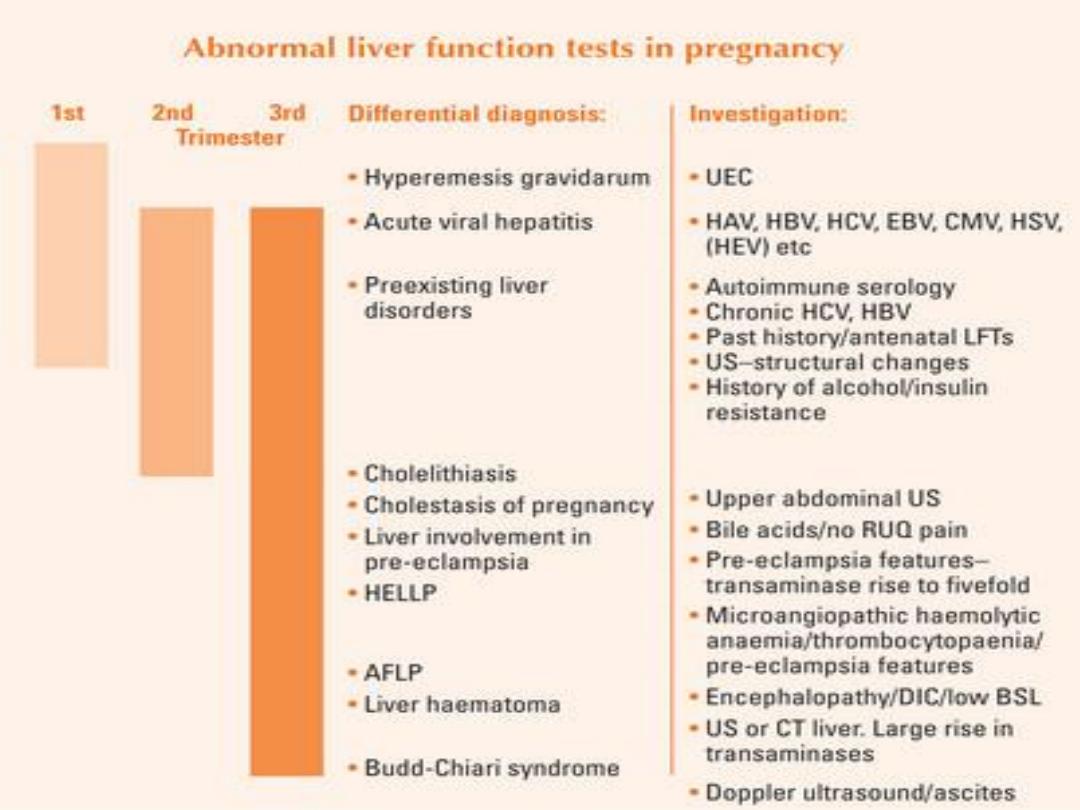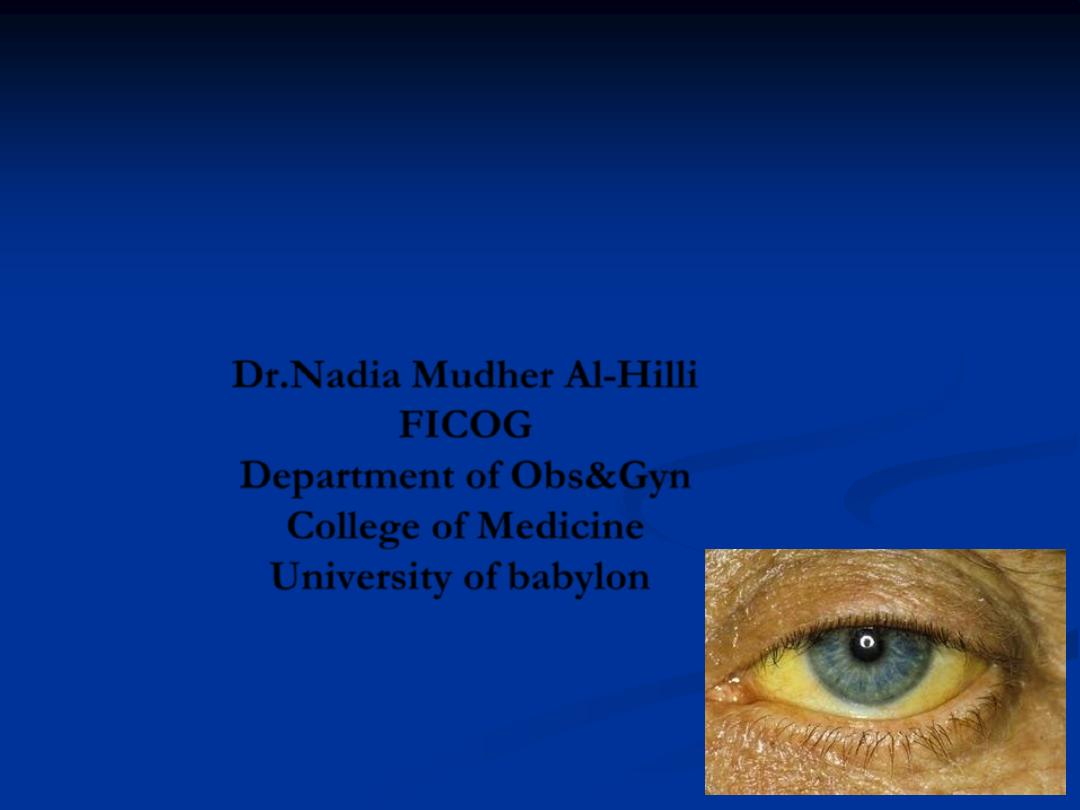
Liver Disease in Pregnency
( Jaundice in Pregnancy)
Dr.Nadia Mudher Al-Hilli
FICOG
Department of Obs&Gyn
College of Medicine
University of babylon
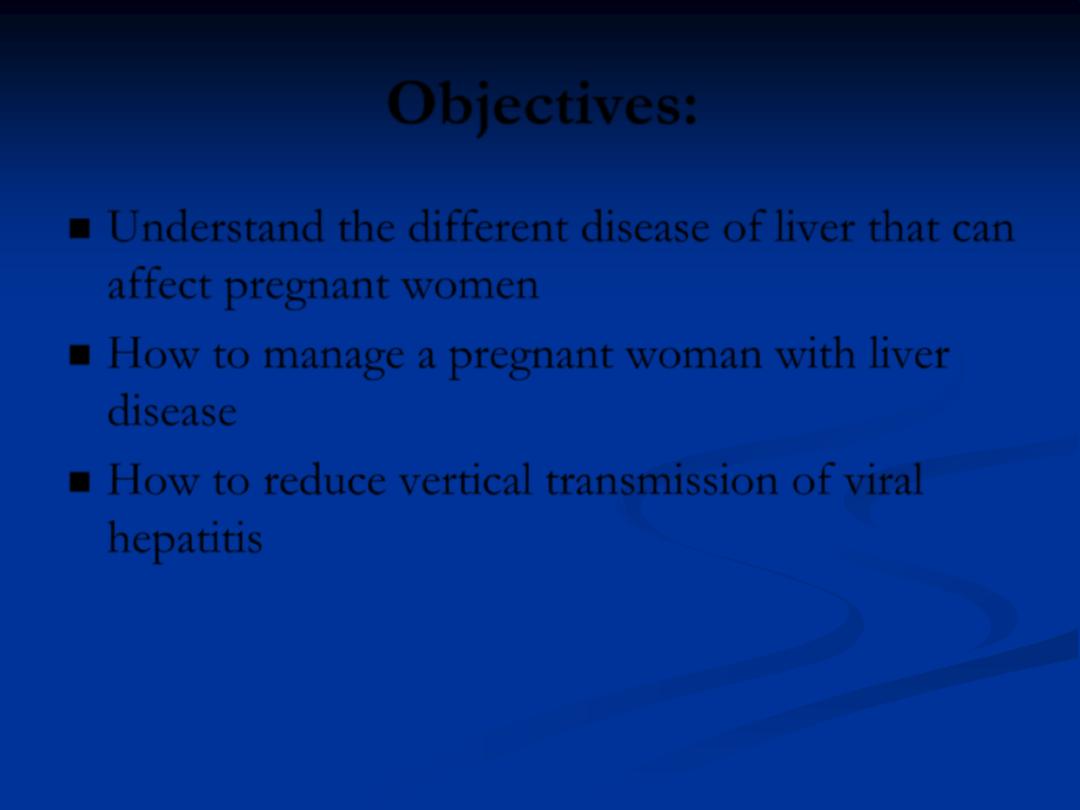
Objectives:
Understand the different disease of liver that can
affect pregnant women
How to manage a pregnant woman with liver
disease
How to reduce vertical transmission of viral
hepatitis
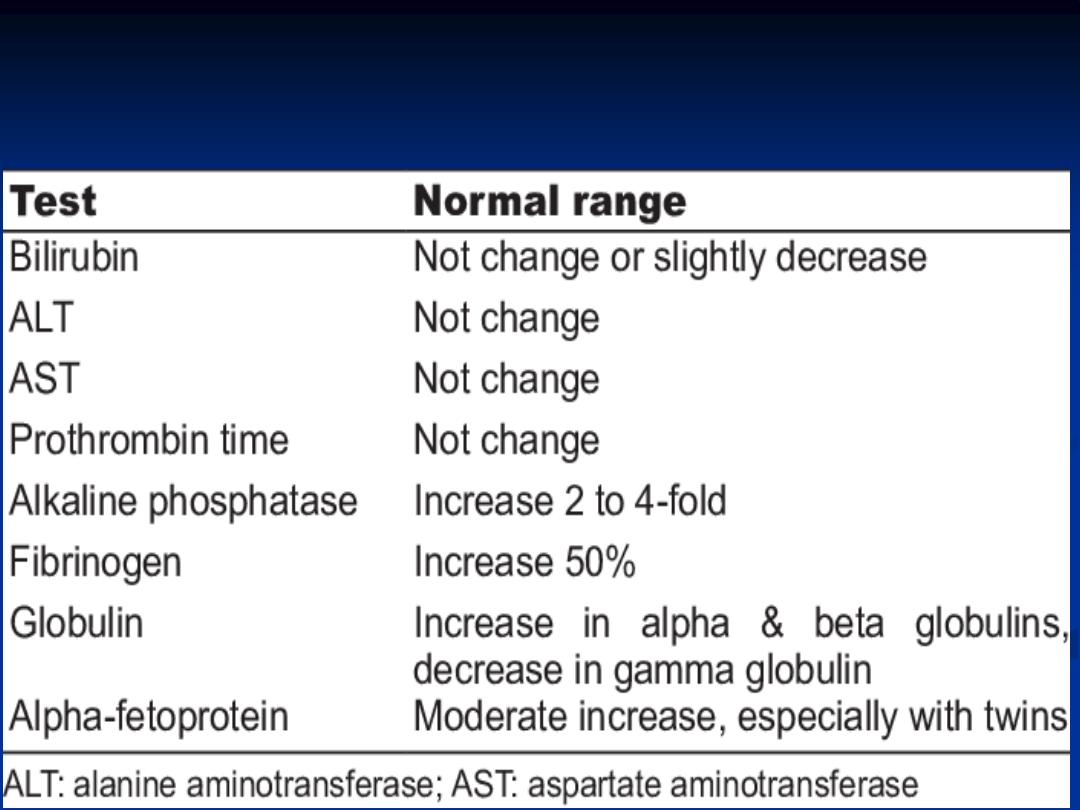
Changes in liver function test during pregnancy
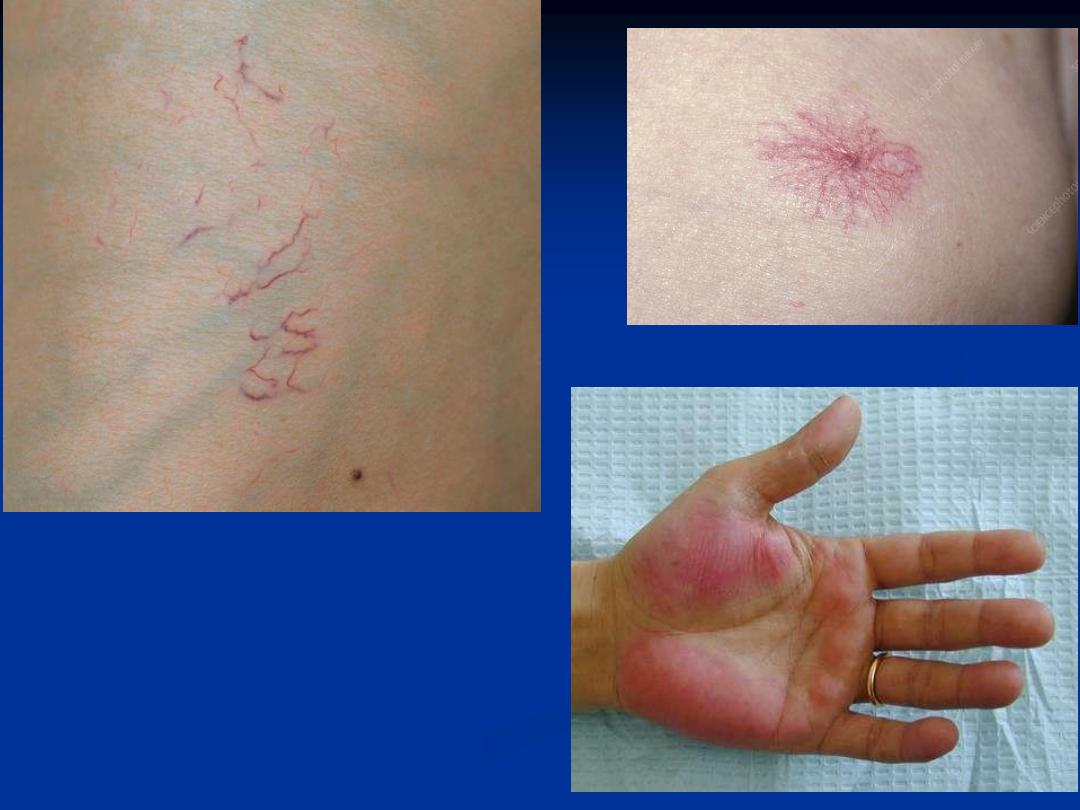
Spider angioma
telangiectasia
Palmar erythema
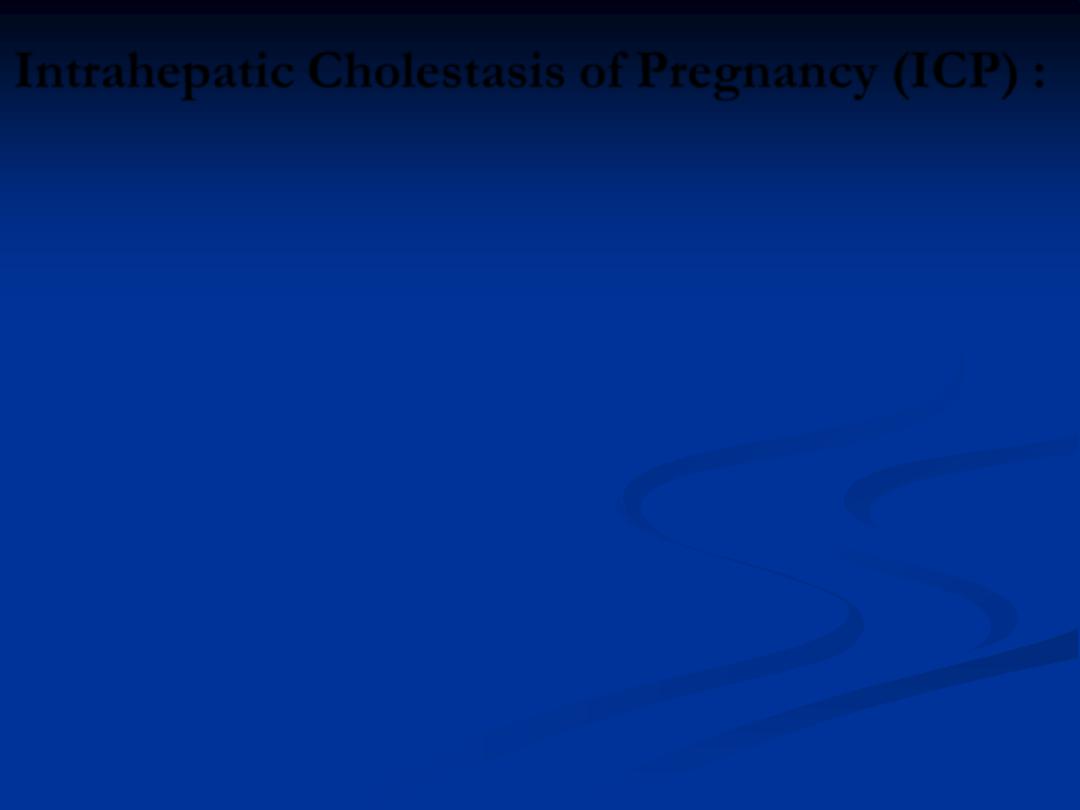
Intrahepatic Cholestasis of Pregnancy (ICP) :
Also called Obstetric Cholestasis is an
impairment of bile flow which may clinically
present with fatigue, pruritus and, in its most
overt form, jaundice.
ICP is the commonest liver‐specific disorder
in pregnancy
The importance of this condition is its
association with sudden IUFD, mostly at term.

Pathogenesis:
The etiology of ICP has a genetic component,
with a 17‐ fold increase of developing the disease
in parous first degree relatives.
Mutations have been identified in biliary
transporters, which transport bile acids and
phosphatidylcholine from the hepatocyte into bile.
raised reproductive hormones in pregnancy
impact the normal pathways of bile acid
homeostasis resulting in the development of
cholestasis, and this is likely to be more severe in
genetically predisposed women.
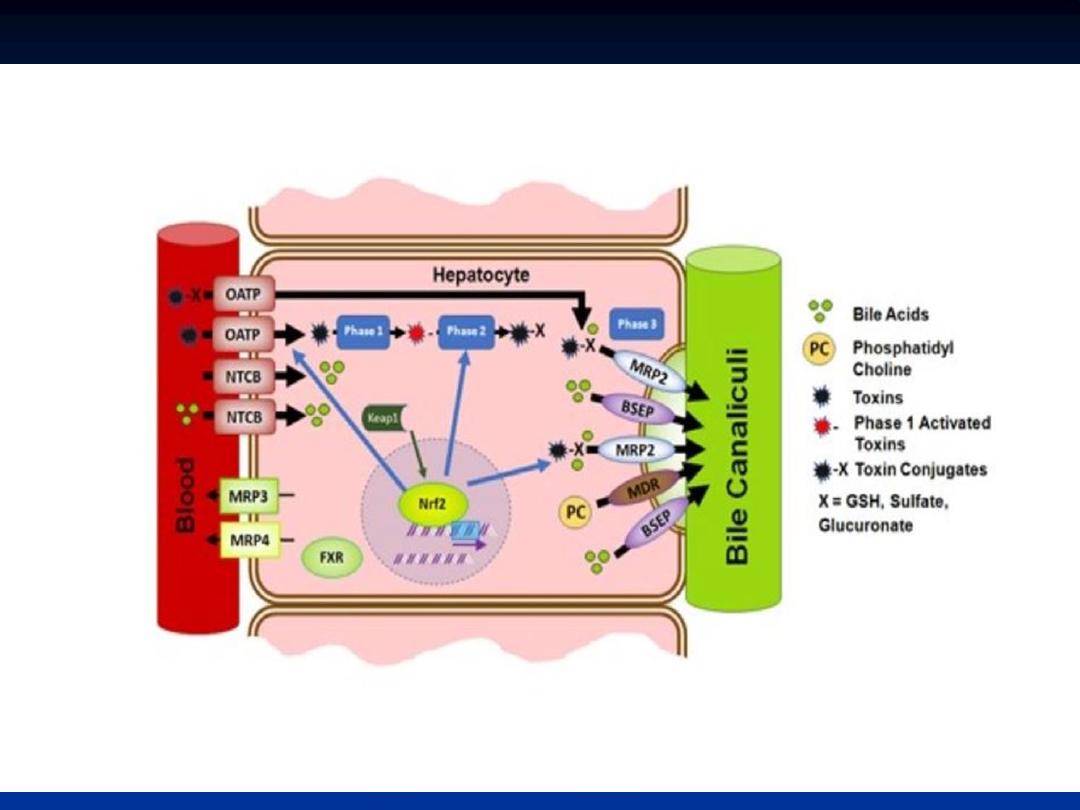
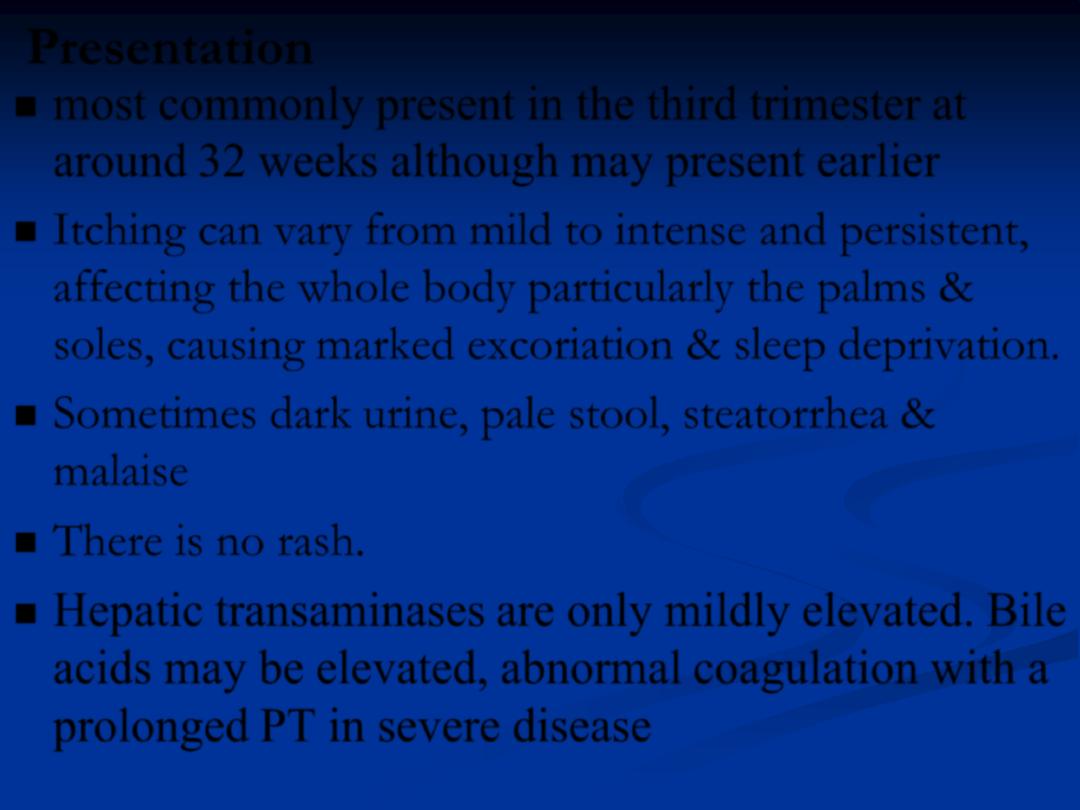
Presentation
most commonly present in the third trimester at
around 32 weeks although may present earlier
Itching can vary from mild to intense and persistent,
affecting the whole body particularly the palms &
soles, causing marked excoriation & sleep deprivation.
Sometimes dark urine, pale stool, steatorrhea &
malaise
There is no rash.
Hepatic transaminases are only mildly elevated. Bile
acids may be elevated, abnormal coagulation with a
prolonged PT in severe disease
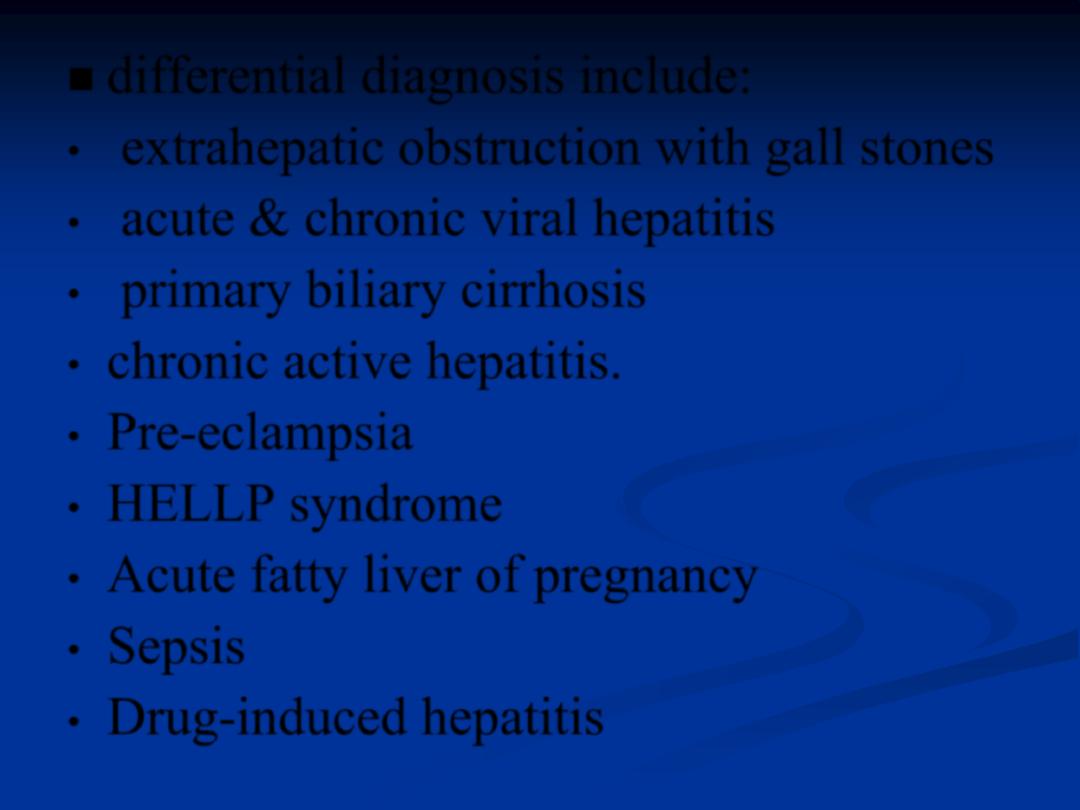
differential diagnosis include:
•
extrahepatic obstruction with gall stones
•
acute & chronic viral hepatitis
•
primary biliary cirrhosis
•
chronic active hepatitis.
•
Pre-eclampsia
•
HELLP syndrome
•
Acute fatty liver of pregnancy
•
Sepsis
•
Drug-induced hepatitis
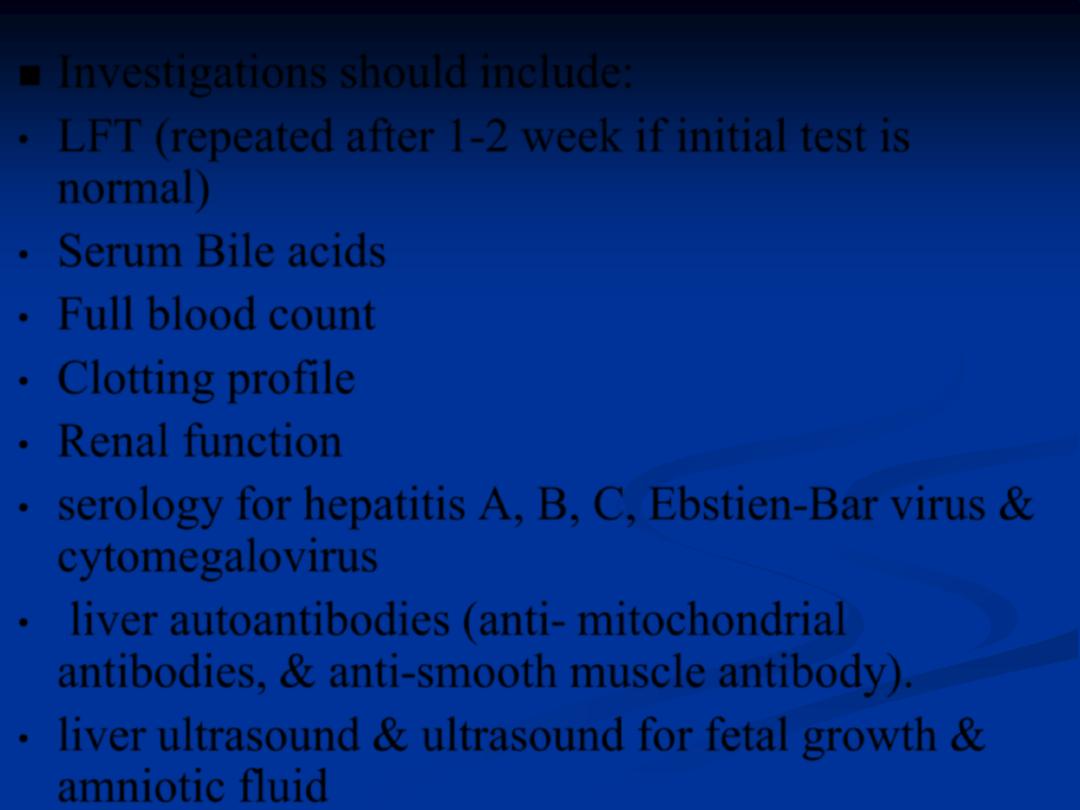
Investigations should include:
•
LFT (repeated after 1-2 week if initial test is
normal)
•
Serum Bile acids
•
Full blood count
•
Clotting profile
•
Renal function
•
serology for hepatitis A, B, C, Ebstien-Bar virus &
cytomegalovirus
•
liver autoantibodies (anti- mitochondrial
antibodies, & anti-smooth muscle antibody).
•
liver ultrasound & ultrasound for fetal growth &
amniotic fluid
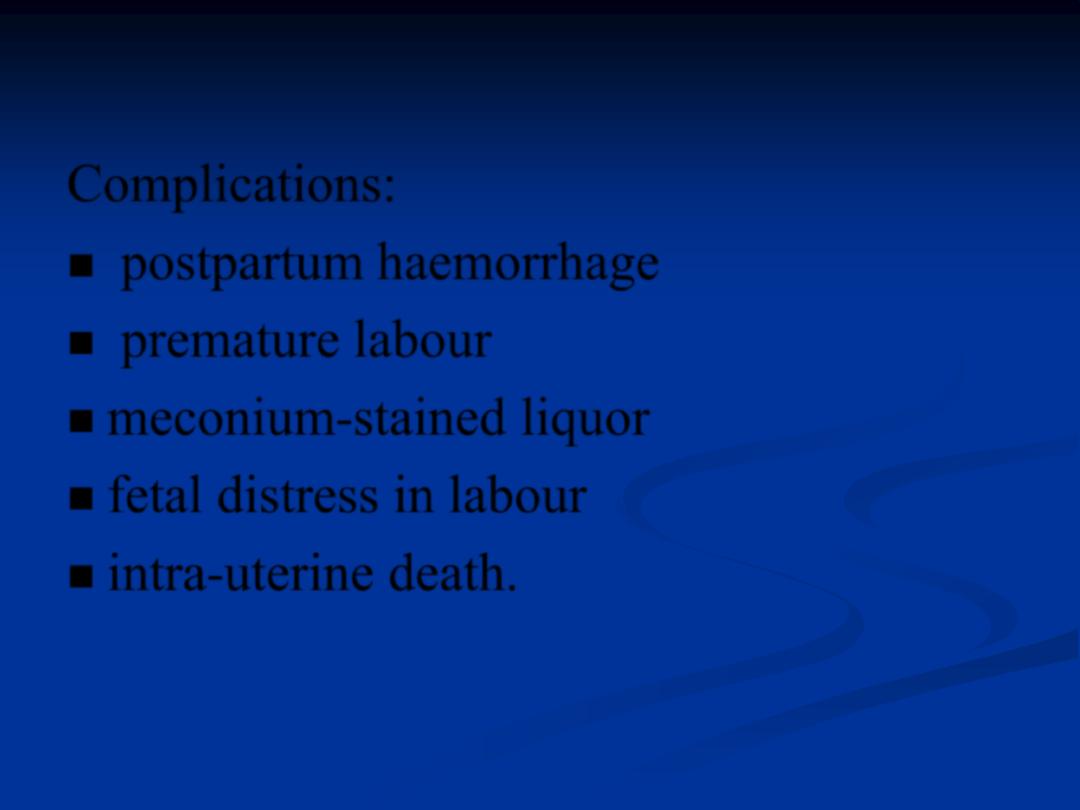
Complications:
postpartum haemorrhage
premature labour
meconium-stained liquor
fetal distress in labour
intra-uterine death.

Management:
Pruritus may be troublesome and is thought to
result from elevated serum bile salts.
Control of pruritis: a combination of
antihistamines & emollients ,
ursodeoxycholic acid improves maternal
pruritus and improves biochemical
derangements.
Vitamin K (water soluble form) should be
given to the mother from the time of diagnosis
to reduce the risk of postpartum haemorrhage.

LFT & clotting time should be monitored
regularly (weekly).
Fetal surveillance with CTG &
ultrasound are not reliable for preventing
fetal death in obstetric cholestasis.
Continuous CTG intrapartum should be
offered
delivery should be induced at 37-38
weeks.

Following delivery, LFT returns to
normal. Should be monitored 10 days
postpartum
Symptoms may recur with estrogen
containing oral contraceptives which
should be avoided.
Recurrence in subsequent pregnancy is
very high

Acute Fatty Liver of Pregnancy:
AFLP is rare, potentailly life threatening
condition, closely related to pre-eclampsia &
HELLP syndrome (genetic defect in fatty acid
oxidation).
presents in the third trimester with abdominal
pain, nausea, vomiting, anorexia & jaundice.
Etiology is unknown but histologically peri-
lobular fatty infiltration of liver cells is noted.
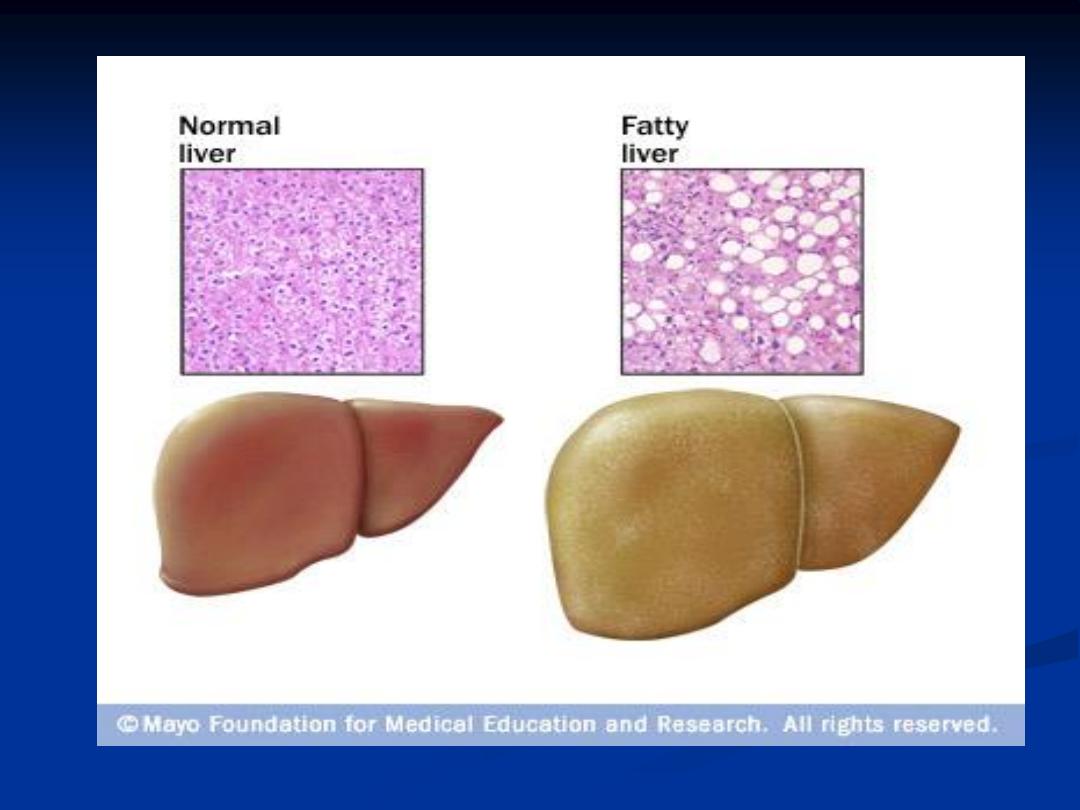
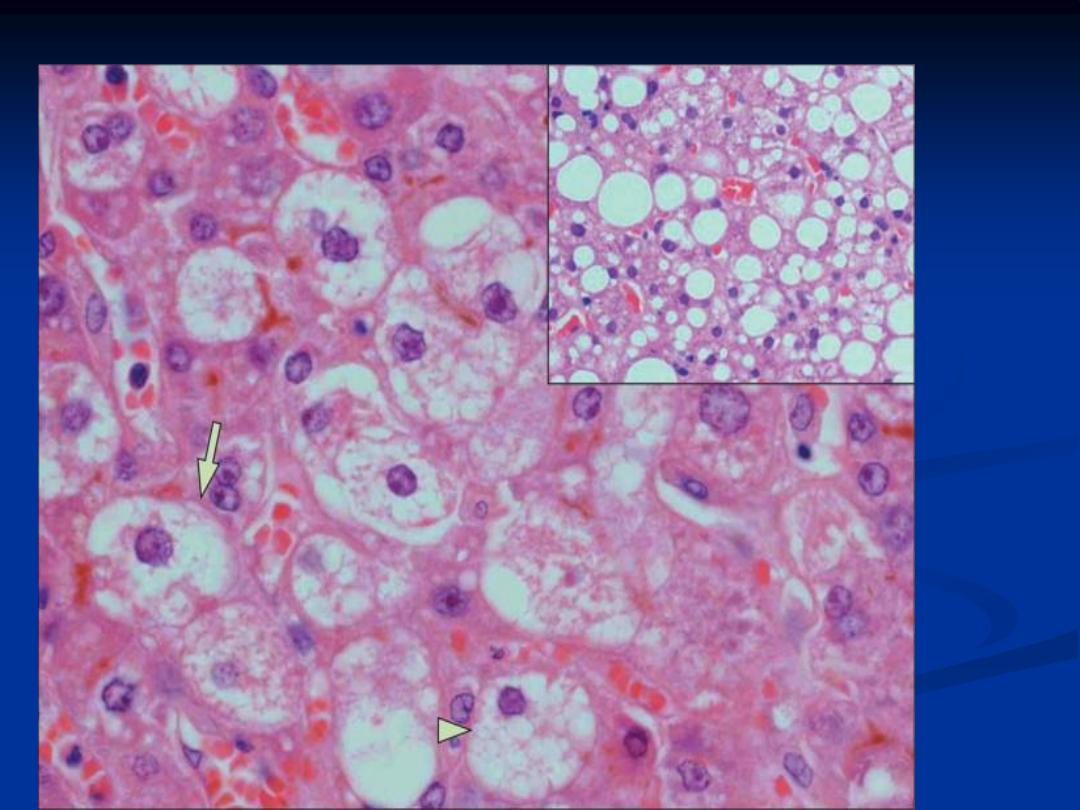
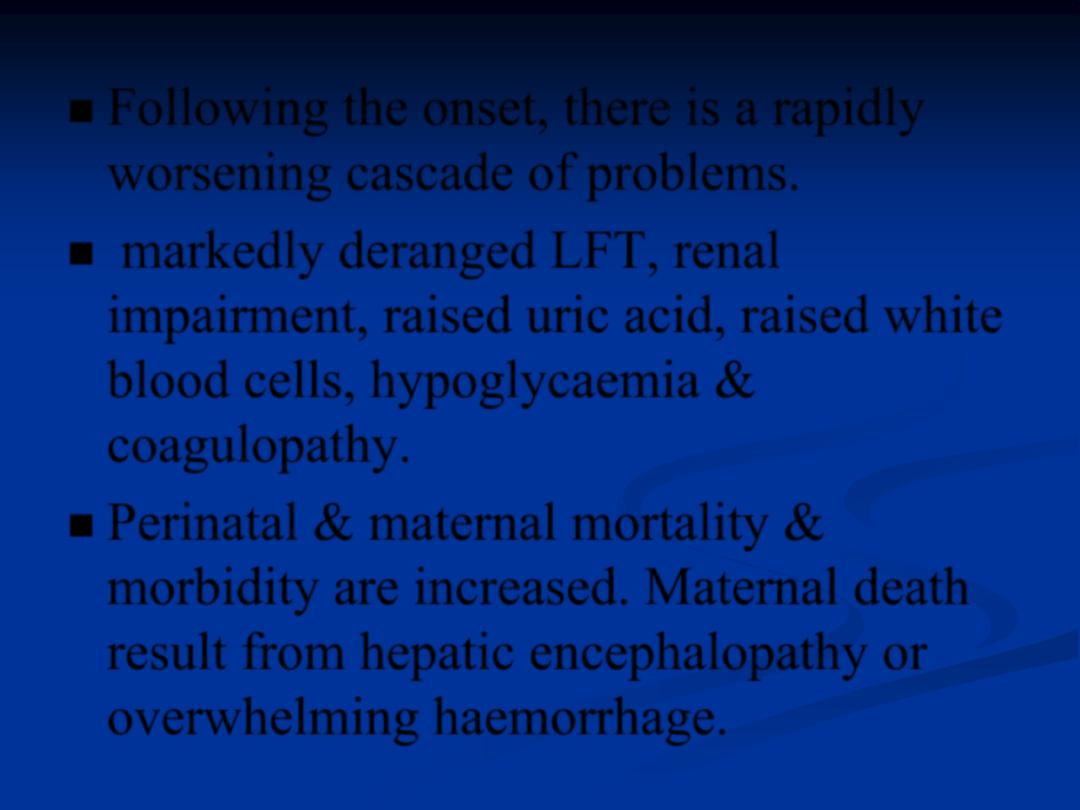
Following the onset, there is a rapidly
worsening cascade of problems.
markedly deranged LFT, renal
impairment, raised uric acid, raised white
blood cells, hypoglycaemia &
coagulopathy.
Perinatal & maternal mortality &
morbidity are increased. Maternal death
result from hepatic encephalopathy or
overwhelming haemorrhage.
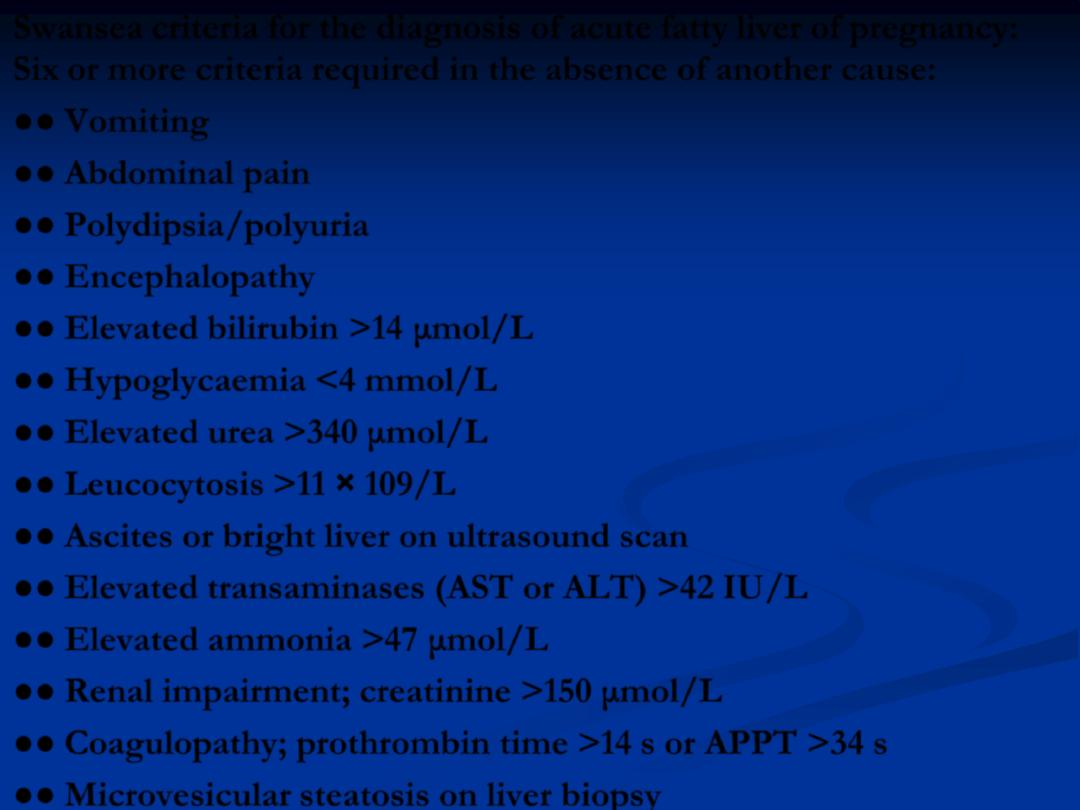
Swansea criteria for the diagnosis of acute fatty liver of pregnancy:
Six or more criteria required in the absence of another cause:
●● Vomiting
●● Abdominal pain
●● Polydipsia/polyuria
●● Encephalopathy
●● Elevated bilirubin >14 μmol/L
●● Hypoglycaemia <4 mmol/L
●● Elevated urea >340 μmol/L
●● Leucocytosis >11 × 109/L
●● Ascites or bright liver on ultrasound scan
●● Elevated transaminases (AST or ALT) >42 IU/L
●● Elevated ammonia >47 μmol/L
●● Renal impairment; creatinine >150 μmol/L
●● Coagulopathy; prothrombin time >14 s or APPT >34 s
●● Microvesicular steatosis on liver biopsy
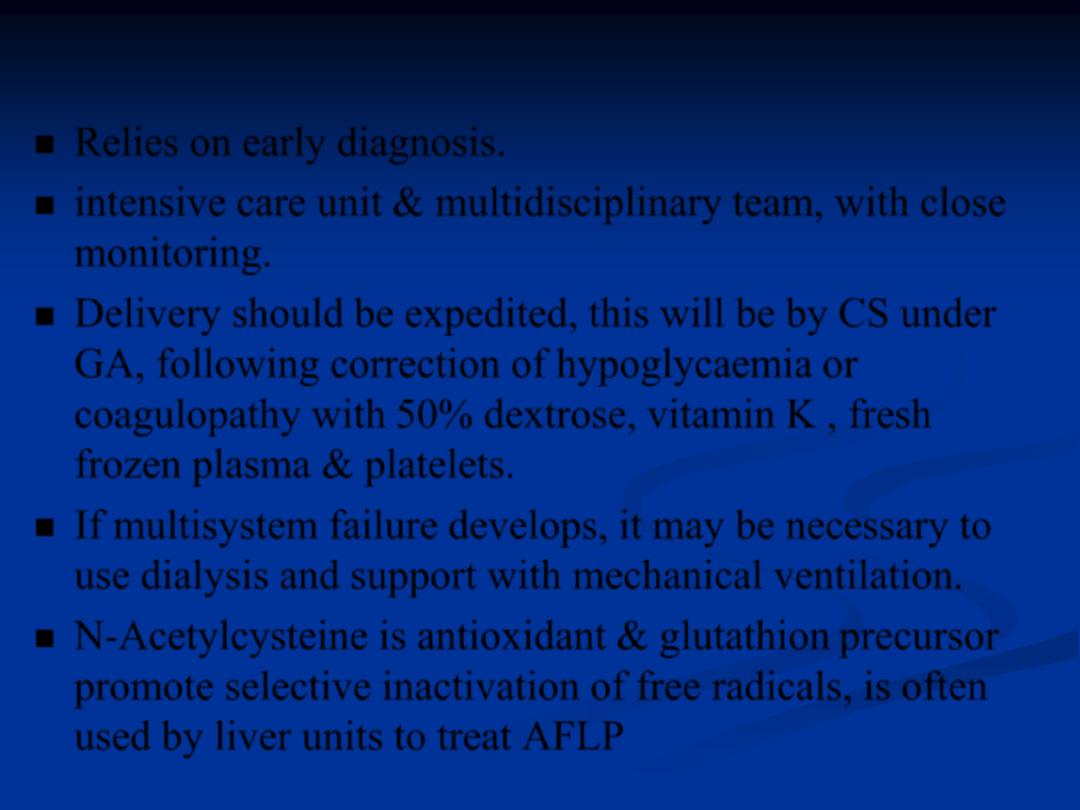
Management:
Relies on early diagnosis.
intensive care unit & multidisciplinary team, with close
monitoring.
Delivery should be expedited, this will be by CS under
GA, following correction of hypoglycaemia or
coagulopathy with 50% dextrose, vitamin K , fresh
frozen plasma & platelets.
If multisystem failure develops, it may be necessary to
use dialysis and support with mechanical ventilation.
N‐Acetylcysteine is antioxidant & glutathion precursor
promote selective inactivation of free radicals, is often
used by liver units to treat AFLP

Management after delivery is conservative.
Referral to liver unit is indicated if liver function
still abnormal or there are features of hepatic
encephalopathy
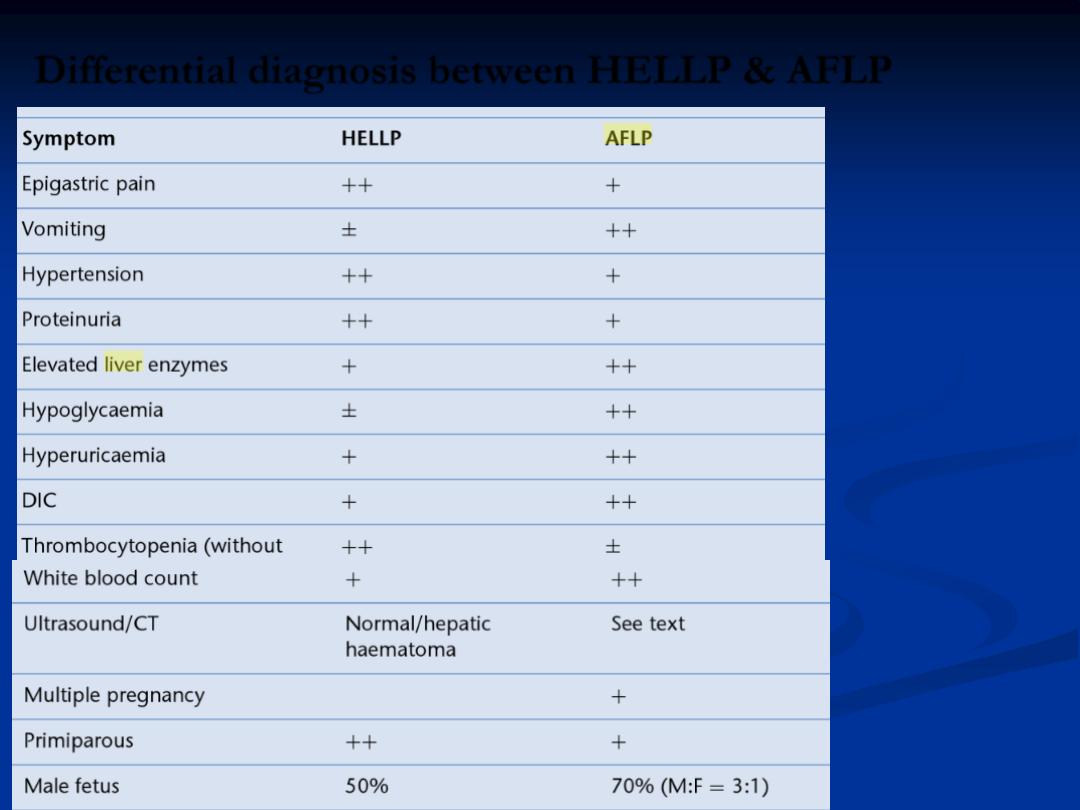
Differential diagnosis between HELLP & AFLP
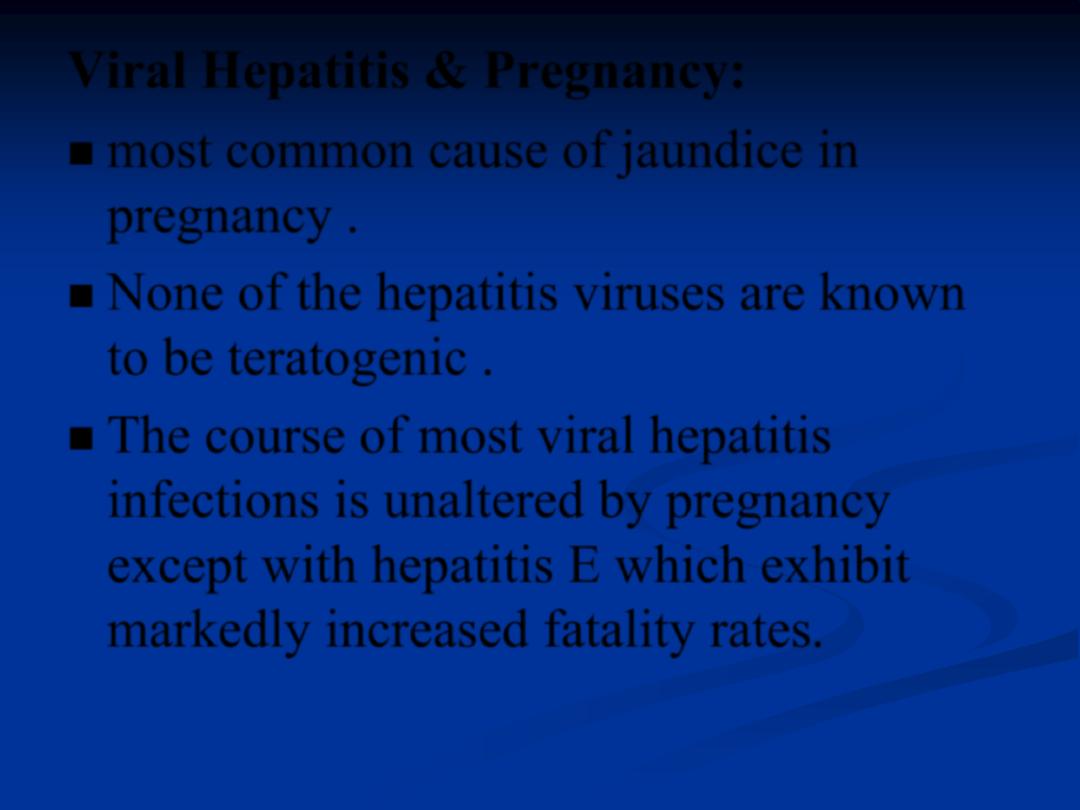
Viral Hepatitis & Pregnancy:
most common cause of jaundice in
pregnancy .
None of the hepatitis viruses are known
to be teratogenic .
The course of most viral hepatitis
infections is unaltered by pregnancy
except with hepatitis E which exhibit
markedly increased fatality rates.
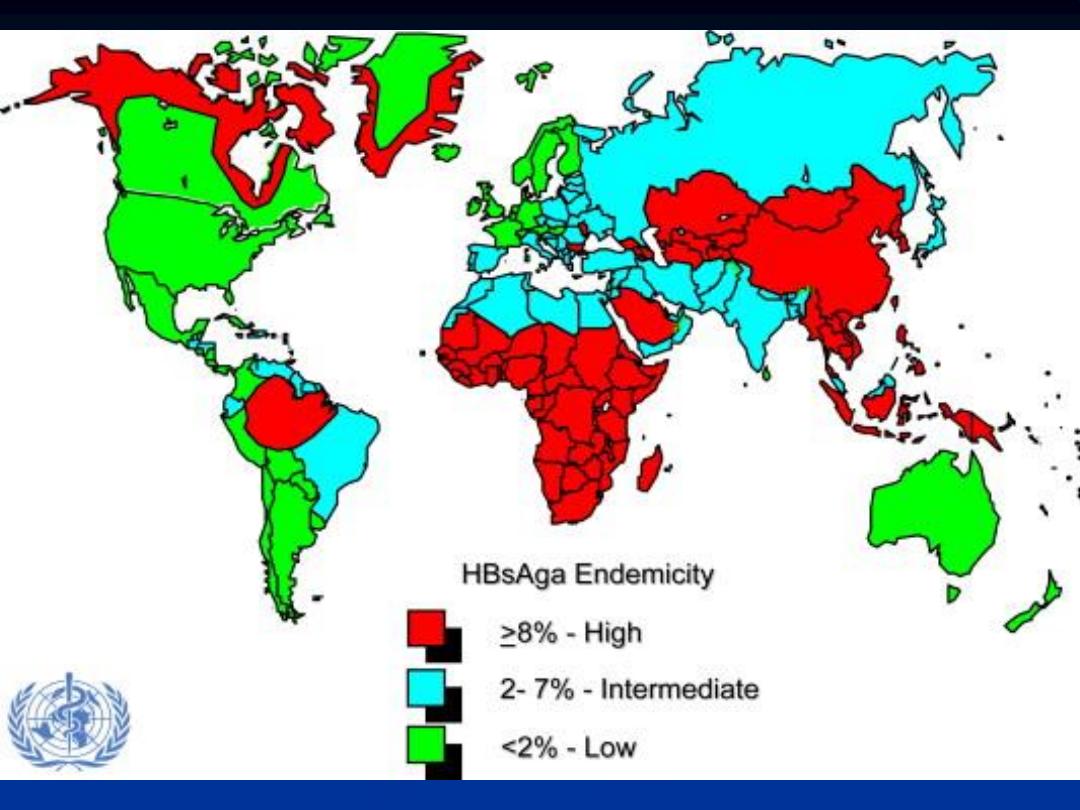
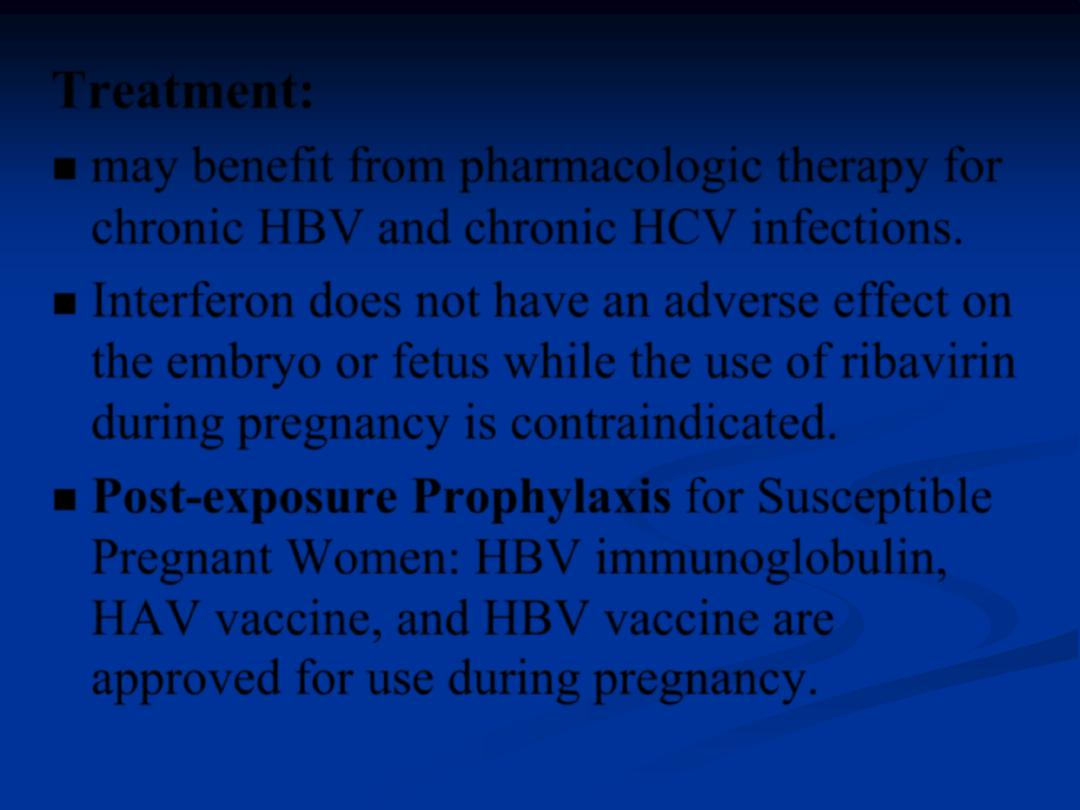
Treatment:
may benefit from pharmacologic therapy for
chronic HBV and chronic HCV infections.
Interferon does not have an adverse effect on
the embryo or fetus while the use of ribavirin
during pregnancy is contraindicated.
Post-exposure Prophylaxis
for Susceptible
Pregnant Women: HBV immunoglobulin,
HAV vaccine, and HBV vaccine are
approved for use during
pregnancy.
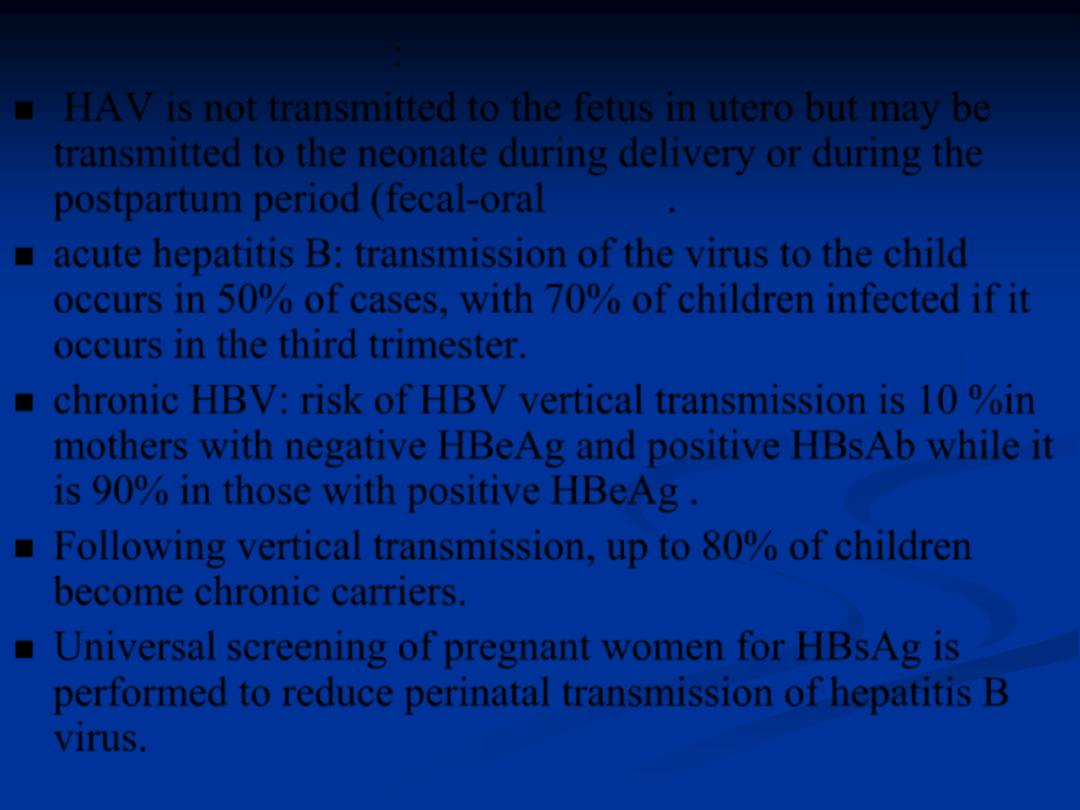
Vertical Transmition
:
HAV is not transmitted to the fetus in utero but may be
transmitted to the neonate during delivery or during the
postpartum period (fecal-oral route) .
acute hepatitis B:
transmission of the virus to the child
occurs in 50% of cases, with 70% of children infected if it
occurs in the third trimester.
chronic HBV:
risk of HBV vertical transmission is 10 %in
mothers with negative HBeAg and positive HBsAb while it
is 90% in those with positive HBeAg .
Following vertical transmission, up to 80% of children
become chronic carriers.
Universal screening of pregnant women for HBsAg is
performed to reduce perinatal transmission of hepatitis B
virus.
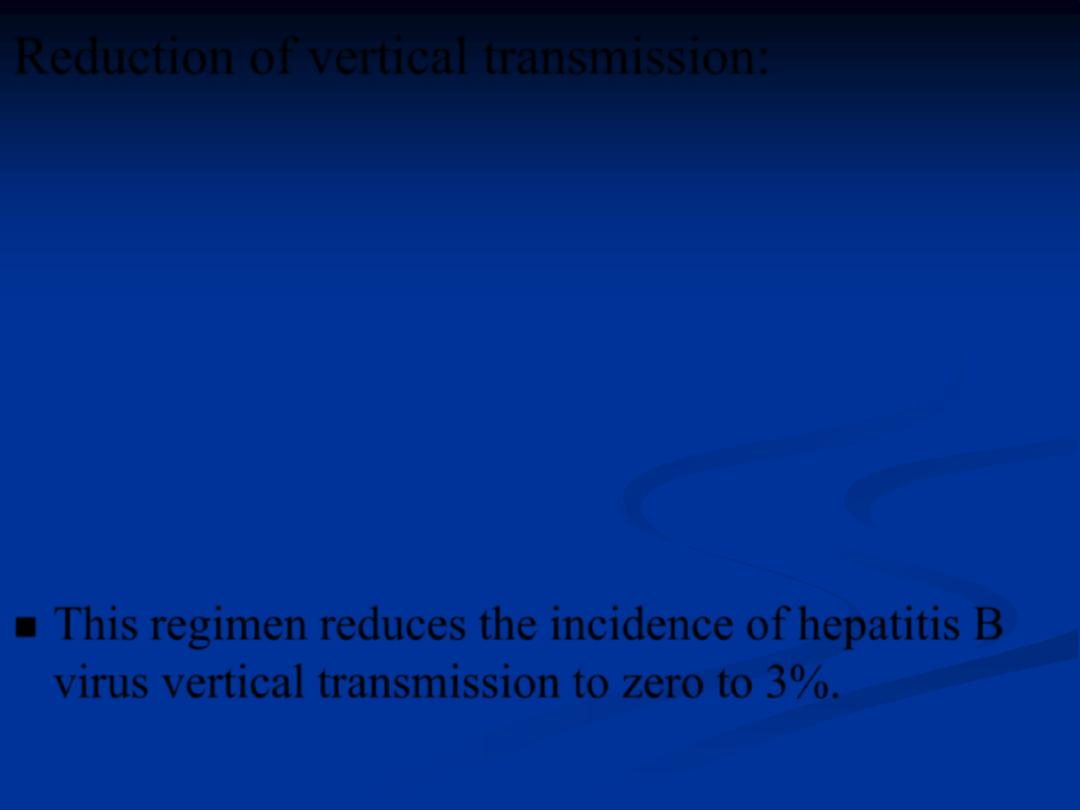
Reduction of vertical transmission:
the use of antiviral therapy such as tenofovir
decreases HBV DNA level in the third trimester
Neonatal prophylaxis: Infants of HBsAg-positive
mothers should receive hepatitis B immune
globulin immunoprophylaxis at birth and hepatitis
B vaccine at one week, one month and six months
after birth .
This regimen reduces the incidence of hepatitis B
virus vertical transmission to zero to 3%.
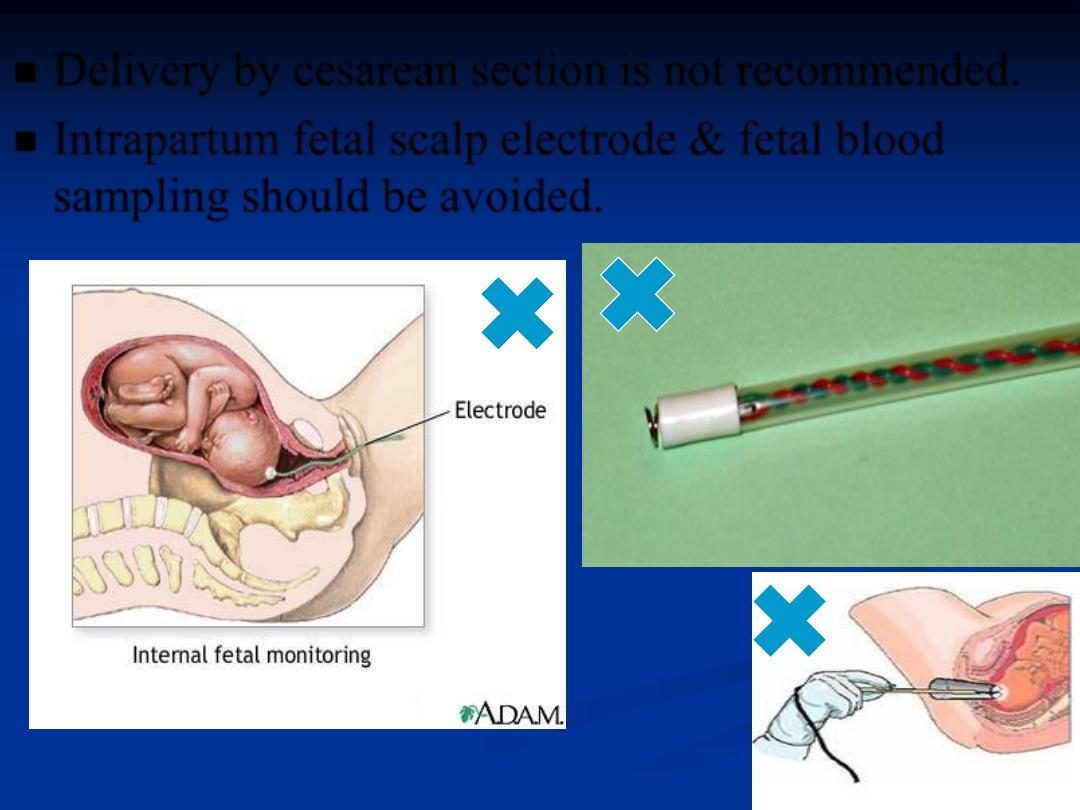
Delivery by cesarean section is not recommended.
Intrapartum fetal scalp electrode & fetal blood
sampling should be avoided.
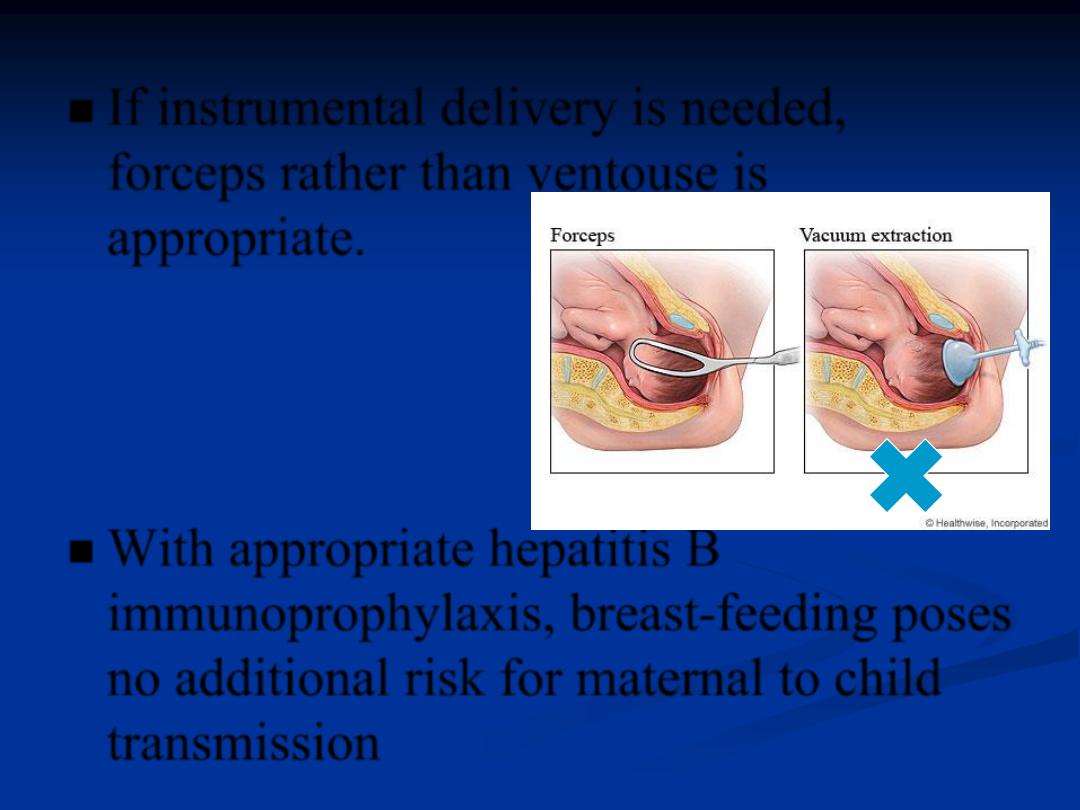
If instrumental delivery is needed,
forceps rather than ventouse is
appropriate.
With appropriate hepatitis B
immunoprophylaxis, breast-feeding poses
no additional risk for maternal to child
transmission

Gallstones
The prevalence in pregnancy is around 19% in multiparous women
& 8% in nulliparous women. acute cholecystitis is much less
common, occurring in around 0.1% of pregnant women.
The aetiology : increased estrogen lead to increased cholesterol
secretion and supersaturation of bile, and increased progesterone
cause a decrease in small intestinal motility.
management is conservative, especially during the first and third
trimesters, in which surgical intervention may confer a risk of
miscarriage or premature labour, respectively.
Medical management: intravenous fluids, correction of electrolytes,
bowel rest, pain management and broad-spectrum antibiotics.
relapse rates are high during pregnancy and surgical intervention
may be warranted, preferentially performed (open or laparoscopic
cholecystectomy) in the second trimester.
